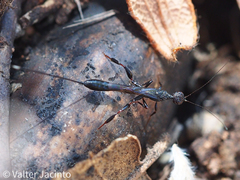Iberian honey bee
Apis mellifera iberiensis
Apis mellifera iberiensis, commonly referred to as the Iberian honey bee, is a subspecies of the western honey bee (Apis mellifera). This type of honey bee is indigenous to the Iberian Peninsula, which includes regions such as the Comunidad Valenciana. Known for its adaptability, the Iberian honey bee thrives in various environments and plays a crucial role in pollination within its native habitat.
Key characteristics of Apis mellifera iberiensis include:
- Appearance: These bees are relatively small and exhibit distinctive yellow and black banding on their abdomens. Their wings are translucent with a slight shimmer.
- Behavior: The Iberian honey bee is known for its resilience and productivity. These bees have adapted to both wet and dry climates, making them extremely versatile.
- Pollination: As avid pollinators, Iberian honey bees are vital for the cultivation of numerous plant species, contributing to the biodiversity and agricultural productivity of the region.
- Importance: In the Comunidad Valenciana, these bees support local ecosystems and agriculture by maintaining the ecological balance and ensuring the propagation of native flora.
This bee plays an indispensable role in the traditional and agricultural landscape of the Comunidad Valenciana. Efforts to preserve their habitats are essential to safeguarding the region's natural heritage.







